Potřebujeme váš souhlas k využití jednotlivých dat, aby se vám mimo jiné mohly ukazovat informace týkající se vašich zájmů. Souhlas udělíte kliknutím na tlačítko „OK“.
ASTM D3744/D3744M-11a
Standard Test Method for Aggregate Durability Index (Includes all amendments And changes 9/10/2018).
Automaticky přeložený název:
Standardní zkušební metoda pro agregátu Trvanlivost Index
NORMA vydána dne 1.12.2011
Informace o normě:
Označení normy: ASTM D3744/D3744M-11a
Poznámka: NEPLATNÁ
Datum vydání normy: 1.12.2011
Kód zboží: NS-24690
Počet stran: 9
Přibližná hmotnost: 27 g (0.06 liber)
Země: Americká technická norma
Kategorie: Technické normy ASTM
Kategorie - podobné normy:
Anotace textu normy ASTM D3744/D3744M-11a :
Keywords:
aggregate degradation, aggregate durability: Aggregate durability index, Degradation, Aggregate, Durability--paving materials/applications, ICS Number Code 93.080.10 (Road construction), 93.080.20 (Road construction materials)
Doplňující informace
| Significance and Use | ||||||||||||||||
|
This test method assigns an empirical value to the relative amount, fineness, and character of clay-like material that may be generated in an aggregate when subjected to mechanical degradation. The procedure has been used in limited geographical areas of the United States and the results have been correlated with aggregate performance in various construction applications, including: aggregate base, permeable material for backfill, fine concrete aggregate, and riprap for rock slope protection. , A minimum durability index is permitted to be specified to prohibit the use of an aggregate in various construction applications that is prone to degradation, resulting in generation of clay-like fines. This test method provides a rapid test for evaluation of the quality of a new aggregate source. Research has indicated it may also be suitable for use instead of the sodium sulfate soundness test for evaluating the durability characteristics of fine aggregate for use in portland-cement concrete, thereby reducing the need for time-consuming and expensive soundness tests. Although the application of this method has been limited to aggregates for specific construction uses, the possibility exists for expanding the application of this method to control the quality of aggregates used in other areas of construction, such as aggregates for use in bituminous paving mixtures, coarse aggregate for use in portland-cement concrete, and aggregate for use as railroad ballast. Note 1—The quality of the results produced by this standard are dependent on the competence of the personnel performing the procedure and the capability, calibration, and maintenance of the equipment used. Agencies that meet the criteria of Practice are generally considered capable of competent and objective testing/sampling/inspection/etc. Users of this standard are cautioned that compliance with Practice alone does not completely assure reliable results. Reliable results depend on many factors; following the suggestions of Practice or some similar acceptable guideline provides a means of evaluating and controlling some of those factors. |
||||||||||||||||
| 1. Scope | ||||||||||||||||
|
1.1 This test method covers the determination of a durability index of an aggregate. The calculated durability index is a value indicating the relative resistance of an aggregate to production of detrimental clay-like fines when subjected to the prescribed mechanical methods of degradation. 1.2 Units—The values stated in either SI units or inch-pound units are to be regarded separately as standard. The values stated in each system may not be exact equivalents; therefore, each system shall be used independently of the other. Combining values from the two systems may result in non-conformance with the standard. 1.2.1 Measurements of volume and mass are only given in SI units because they are the only units typically used in practice when performing this test method. 1.2.2 Measurements in Section 11, Section 15, Equation 3, Equation 4, Table 1, and Figure 2 are only given in inch-pound units because the equipment used in these sections is only manufactured using the inch-pound system. 1.3 This standard does not purport to address all of the safety concerns, if any, associated with its use. It is the responsibility of the user of this standard to establish appropriate safety and health practices and determine the applicability of regulatory limitations prior to use. |
||||||||||||||||
| 2. Referenced Documents | ||||||||||||||||
|
Podobné normy:
Historická
1.9.2013
Historická
1.12.2009
Historická
1.6.2011
Historická
15.7.2012
Historická
1.7.2009
Historická
1.6.2014
Odebírejte informace o nově vydaných normách ZDARMA:
Chcete pravidelně odebírat informace o nově vycházejících normách z celého světa a to zcela zdarma?
Přihlašte se k odběru. Vše je velice jednoduché a absolutně ZDARMA.
Na výběr máte vydavatele z celého světa.


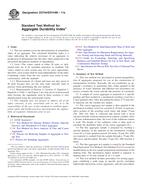
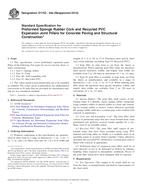 ASTM D1752-04a(2013)..
ASTM D1752-04a(2013)..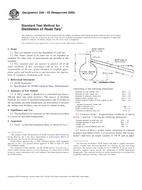 ASTM D20-03(2009)..
ASTM D20-03(2009)..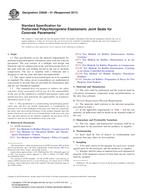 ASTM D2628-91(2011)..
ASTM D2628-91(2011)..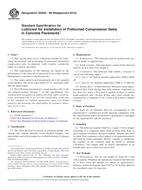 ASTM D2835-89(2012)..
ASTM D2835-89(2012)..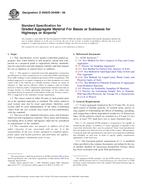 ASTM D2940/D2940M-09..
ASTM D2940/D2940M-09..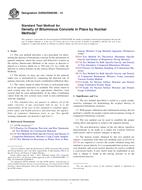 ASTM D2950/D2950M-14..
ASTM D2950/D2950M-14..
 Cookies
Cookies
